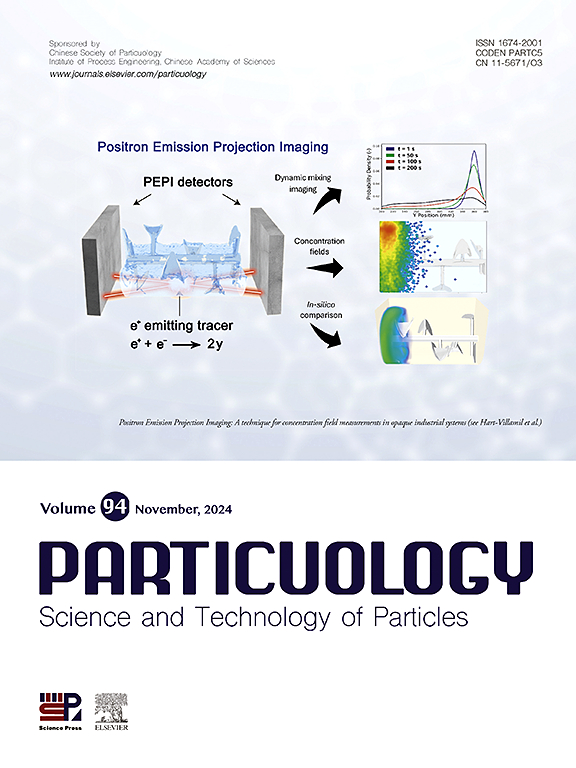Numerical study and experimental validation of copper powder plasma spheroidization process
IF 4.1
2区 材料科学
Q2 ENGINEERING, CHEMICAL
引用次数: 0
Abstract
The powder characteristics, such as particle size and geometry, play an important role in determining the quality of powder layer and parts fabricated with powder-based additive manufacturing processes. Previous research has found that spherical particles result in better powder flowability and spreadability. An attempt to improve particle sphericity is to process the powder using plasma spheroidization, where the particles heat up, melt, and reshape to spheres. Several research works have been conducted to study the plasma spheroidization process and understand particle-plasma reactions. Although researchers have turned to simulations to overcome the difficulty of experimental study of such reactions, they only characterized the powder particle size without evaluating the particle geometry. In this work, the plasma spheroidization process of copper powder was numerically and experimentally examined to assess the impact of plasma spheroidization on particle size and geometry. For the first time in the literature, a method of simulation was proposed to numerically quantify the particle geometry at each particle residence time. The results of simulation agreed well with those of experiments.

铜粉等离子体球化过程的数值研究与实验验证
粉末特性,如粒度和几何形状,在决定粉末层和粉末增材制造工艺制造的零件质量方面起着重要作用。以往的研究发现,球形颗粒使粉末具有更好的流动性和铺展性。改善颗粒球形度的一种尝试是使用等离子体球化处理粉末,其中颗粒加热,融化并重塑成球体。为了研究等离子体球化过程和了解粒子-等离子体反应,已经开展了一些研究工作。虽然研究人员已经转向模拟来克服这种反应的实验研究的困难,但他们只是表征了粉末的粒度,而没有评估颗粒的几何形状。本文对铜粉的等离子体球化过程进行了数值和实验研究,以评估等离子体球化对颗粒尺寸和几何形状的影响。在文献中首次提出了一种模拟的方法来数值量化粒子在每个停留时间的几何形状。仿真结果与实验结果吻合较好。
本文章由计算机程序翻译,如有差异,请以英文原文为准。
求助全文
约1分钟内获得全文
求助全文
来源期刊

Particuology
工程技术-材料科学:综合
CiteScore
6.70
自引率
2.90%
发文量
1730
审稿时长
32 days
期刊介绍:
The word ‘particuology’ was coined to parallel the discipline for the science and technology of particles.
Particuology is an interdisciplinary journal that publishes frontier research articles and critical reviews on the discovery, formulation and engineering of particulate materials, processes and systems. It especially welcomes contributions utilising advanced theoretical, modelling and measurement methods to enable the discovery and creation of new particulate materials, and the manufacturing of functional particulate-based products, such as sensors.
Papers are handled by Thematic Editors who oversee contributions from specific subject fields. These fields are classified into: Particle Synthesis and Modification; Particle Characterization and Measurement; Granular Systems and Bulk Solids Technology; Fluidization and Particle-Fluid Systems; Aerosols; and Applications of Particle Technology.
Key topics concerning the creation and processing of particulates include:
-Modelling and simulation of particle formation, collective behaviour of particles and systems for particle production over a broad spectrum of length scales
-Mining of experimental data for particle synthesis and surface properties to facilitate the creation of new materials and processes
-Particle design and preparation including controlled response and sensing functionalities in formation, delivery systems and biological systems, etc.
-Experimental and computational methods for visualization and analysis of particulate system.
These topics are broadly relevant to the production of materials, pharmaceuticals and food, and to the conversion of energy resources to fuels and protection of the environment.
 求助内容:
求助内容: 应助结果提醒方式:
应助结果提醒方式:


